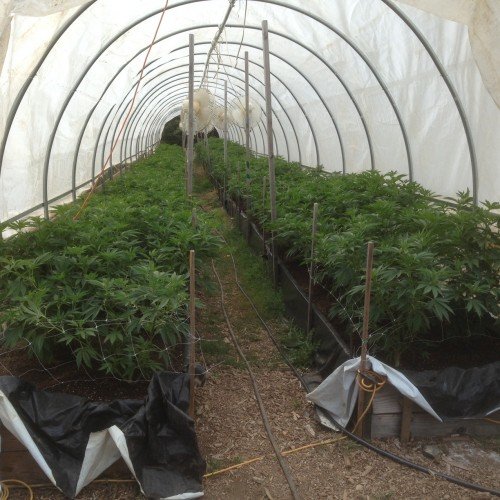Nitrogen is one of the 4th most abundant elements on Earth . It plays a vital role in plant health and could arguably be the most crucial component necessary to plant development. Classified as a "macronutrient", nitrogen plays out many different roles pivotal to creating balance through the developmental stages. One of the few "mobilized" nutrients, nitrogen can be moved to other parts of the plant when deficiencies arise. Nitrogen is also is a part of the building blocks of proteins which enzymes are made of. Enzymes are necessary in all cell activity. It also is one of the 5 molecules chlorophyll is comprised of Carbon, Hydrogen, Mg, Nitrogen, Oxygen. No nitrogen= no photosynthesis. What makes nitrogen unique is its powerful triple covalent bond leaving it extremely difficult to break apart. In the early 1900's scientists discovered specific varieties of microbes which created an enzyme capable of breaking these triple bonds apart. "Nitrogen fixating microbes" can make up to 50% of the delivery system to plants when in abundance. At the same time a German scientist found a way out to artificially fix nitrogen(synthetic). Over time it was industrialized and now supports one third of the world's food production. This process ironically consumes 5% of the world's natural gas usage annually leaving us to wonder if there's a better way. In this segment we are going to explore other proper applications of nitrogen. These techniques and alternative forms drastically reduce consumption as well as impact on the environment providing means through microbiology allowing terpenes and flavonoids to properly display their essence without as much human interference. Too much synthetic or organic Nitrogen can leave your cannabis harsh and less desirable. By knowing the alternative forms to apply nitrogen you can lower costs and be more effective with your usage. Nitrogen fixating bacteria play an important role in the delivery process. These symbiotic relationships take a bit of time to initiate, so starting from the earliest stages possible is recommended. For outdoor growing these microbes are critical to sustaining long term delivery as it slows the consumption of your amended forms of nitrogen, diversifying availability. The Earth's atmosphere is 78% nitrogen, so there appears to be an ample supply making this a wise alternative. Here's a list of the nitrogen fixating microbes :
- Free living bacteria (non-symbiotic) Cynanobacteria or (Blue-Green Algae) Azotobacter– These organisms have the highest metabolism in the world.
- Mutualistic bacteria (symbiotic)
- Rhizobium-associated with leguminous plants
- Frankia-(Actinomycetes)-bacteria which acts like a fungus
- Spirillum-associated with cereal grasses The mutualistic Nitrogen Fixating Bacteria penetrate through the roots of their host plant where they multiply and stimulate root nodules.This results in stronger cell development for plants. Within these nodules these bacteria convert nitrogen to nitrates, which then the host plant can then utilize.
If your interested in obtaining these products be sure to read the labels. The most common is Azobacter which can be found in many mycorrhizae products sold on the market. (Truly the best way is to build compost). Azobacter has also been known for its root stimulating capabilities making it great for cloning. Another great alternative to the stronger chemically driven products. We should all constantly seek new ways to accomplish the repetitive actions involved with growing cannabis. Let's review a variety of nitrogen rich amendments fitting to any median or soil for home or large scale garden use : Chicken Manure 3-3-2 Mexican Bat Guano 7-3-1 Marine Fossilized Bird Guano 13-10-10 Feather Meal 13-0-0 Blood Meal 12-0-0 Cottonseed meal 6-2-1 Insect Frass 2-2-2 All of these amendments are greatly beneficial to increasing levels of nitrogen and stimulating microbial activity. They are best delivered through light applications repeating the process every two weeks contingent upon conditions and the plants feeding capabilities .
| Water Temp (ºF) | Brew Time |
|---|---|
| 50 | 48h |
| 60 | 36h |
| 70 | 24h |
| 80 | 12h |
This tea recipe is highly beneficial for establishing early relationships rich in fungal activity critical to building healthy soil structure . Utilizing high quality amendments to brew for teas can play a major role in minimizing environmental impacts while drastically reducing overall consumption. All the information provided is designed to simplify feeding techniques and can be adjusted according to the needs of your plants. Many years of observation has allowed us to see how the minimalist's approach (less is best) has created superior results over mainstream products. In the very near future many of the avenues we have traveled agriculturally will finally come to a dead end. Hopefully the voices of these present generations will continue to call out for change, pivotal to the survival, health and vitality of our planet and species alike.






Lots of unique info!